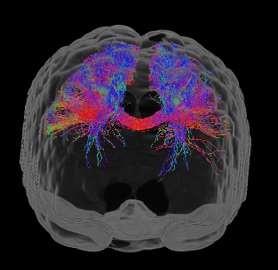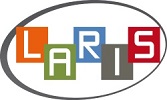MAGIC Research Project
Prediction of Motricity in children after neonatal stroke by Graphs and AI based on Brain Connectivity.
Group : Information, Signal, Image and Life Sciences
Labelling: none
Duration: from june 2025 to june 2027
Funding: Pays de la Loire Region and UA (PULSAR funding)
Staff involved from LARIS: Patty COUPEAU
Abstract
The potential for a brain MRI scan to predict a child's motor disability following a stroke is a promising avenue for research. In France, neonatal stroke occurs in approximately one out of every 3,000 births, resulting in a lesion in the brain of the affected newborn that is not curable. In 30% of cases, the child will develop hand mobility difficulties. These motor problems, which are linked to a lesion in the brain, are known as cerebral palsy and are the leading cause of motor disability in children in France. To understand better the role of the brain in the development of motor disabilities, brain imaging is proving to be a powerful ally, especially MRI. Diffusion MRI is a particular type of magnetic resonance imaging (MRI) modality that has the capacity to visualise the nerve fibres that facilitate the transmission of nerve information between neurons. The objective of the MAGIC project is to depict this nerve fibre mapping of the brain in the form of a graph, wherein the nodes will represent brain regions and the edges will indicate properties of the nerve fibres connecting these regions. A graph neural network will be trained to predict different motor scores in clinical tests carried out by doctors. The objective of this study is to develop a methodology that facilitates the expeditious prediction of the motor function of children following a neonatal stroke, thereby obviating the necessity for time-consuming diagnostic procedures. Furthermore, there exist methodologies for explaining artificial intelligence prediction. In this manner, the potential exists for the prediction of a child's motor function, and the identification of the brain region(s) responsible for the loss of motor skills. MAGIC is a pioneering project that aims to evaluate the contribution of diffusion MRI to motor diagnosis following neonatal stroke, and potentially other cerebral pathologies.



